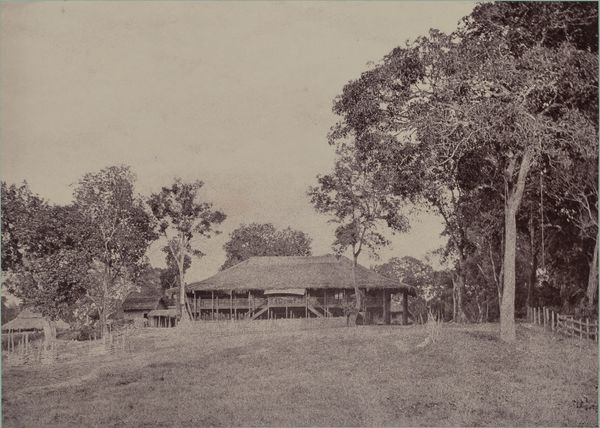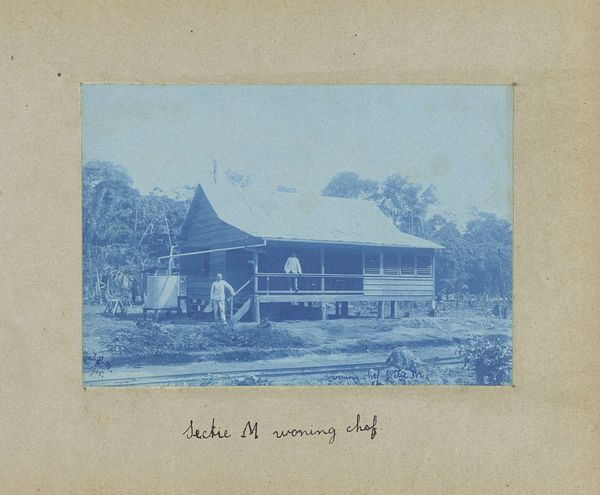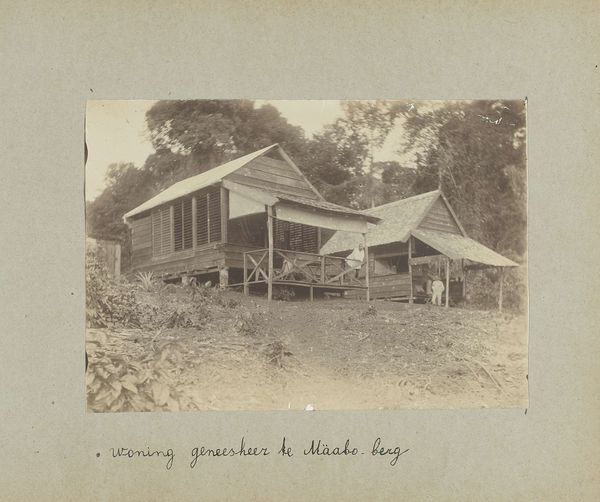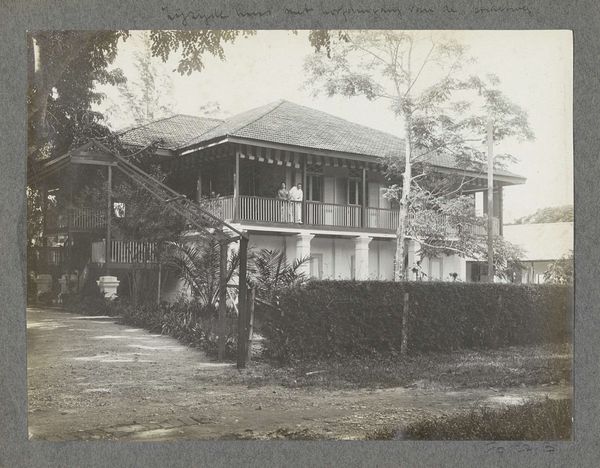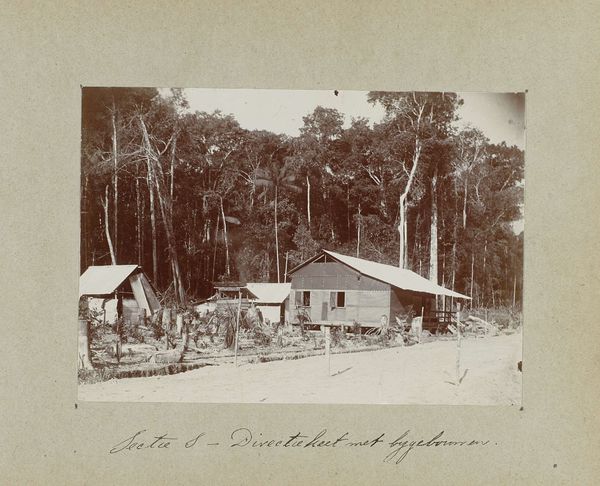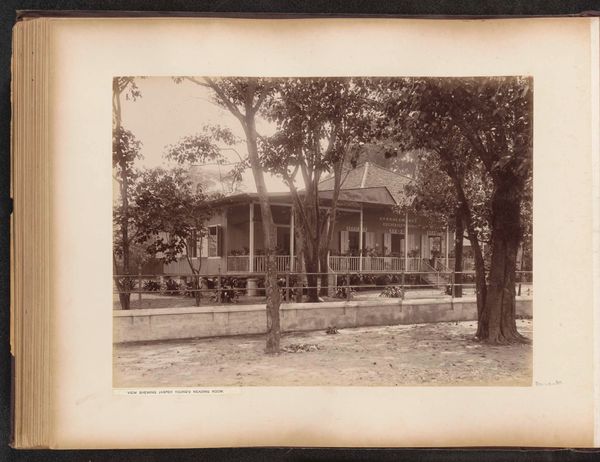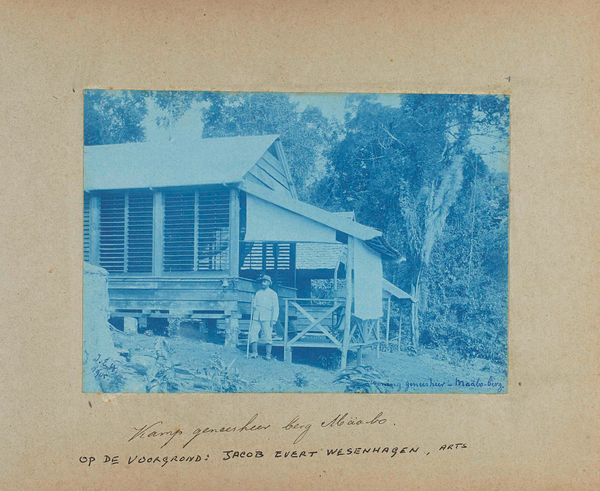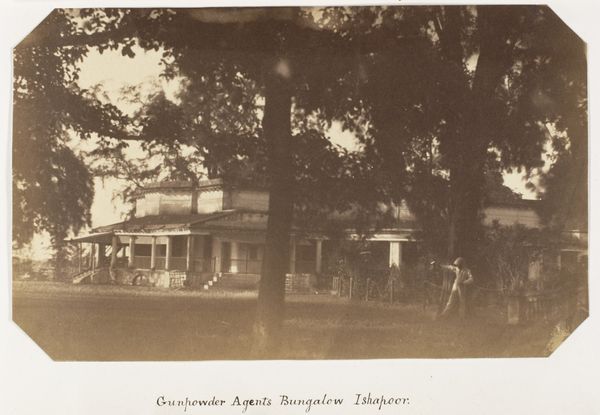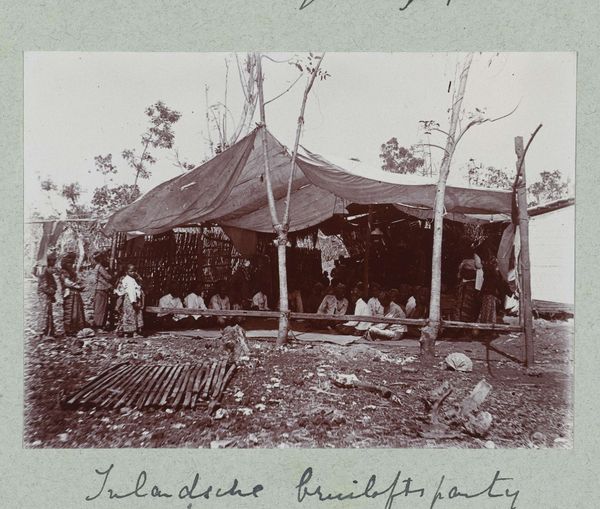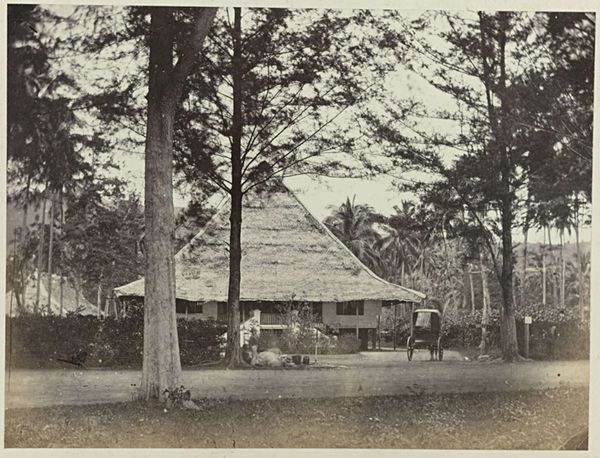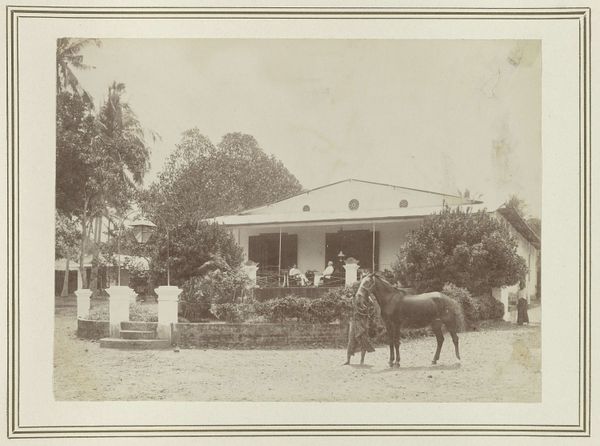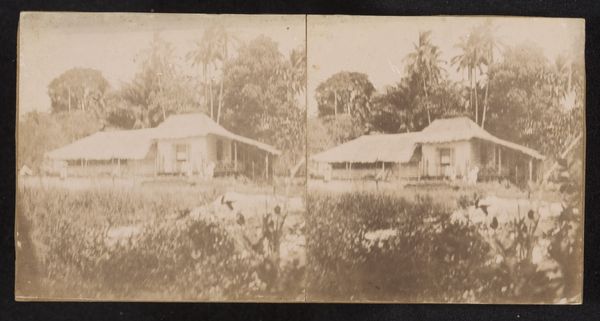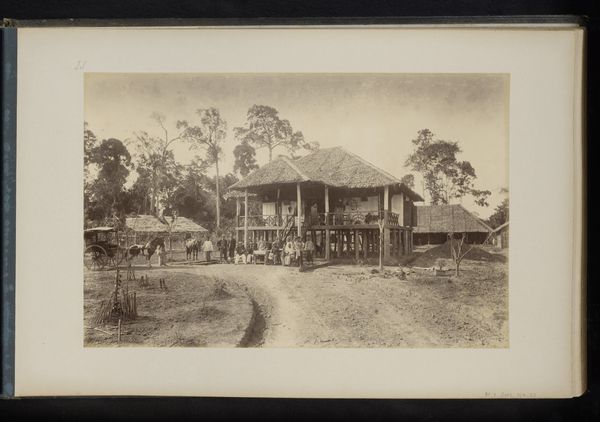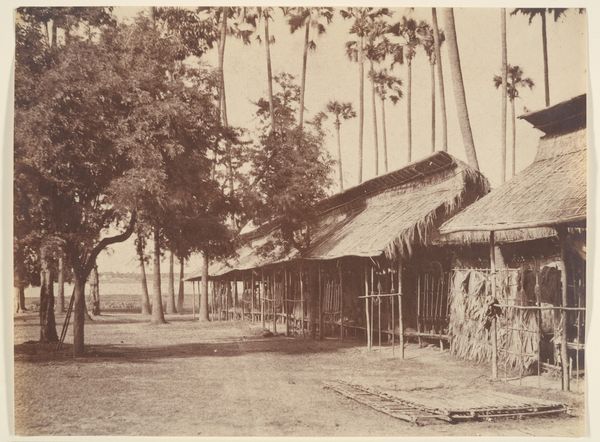
photography, gelatin-silver-print
#
landscape
#
photography
#
historical photography
#
orientalism
#
gelatin-silver-print
Dimensions: height 125 mm, width 173 mm
Copyright: Rijks Museum: Open Domain
Editor: This gelatin-silver print, titled "Ingenieurswoning op de Määbo-berg" by Augusta Curiel, was taken sometime between 1905 and 1910. It evokes a sense of quiet colonial life, doesn't it? What historical context can you offer to understand the implications of this domestic scene? Curator: Absolutely. On the surface, it may seem like a simple portrayal of a dwelling. However, consider the historical context. Curiel was documenting Suriname, a Dutch colony. Who are these engineers, and what is their relationship to the land and its people? What does it mean to photograph a scene that represents the exploitation and extraction of resources? Editor: So, you're suggesting we need to think beyond just the image and consider the power dynamics at play? Curator: Precisely. Photography, during this era, played a key role in constructing colonial narratives. Whose gaze are we seeing the world through? Who is being represented and for what purpose? Consider how the ‘landscape’ is never neutral, it is shaped by power and ideology. Editor: That's fascinating. It makes me rethink how I initially perceived the image. It feels more like evidence of colonial occupation rather than a neutral slice of life. Do you think the ‘orientalism’ tag assigned to this piece holds up? Curator: Indeed, because orientalism, broadly, exoticizes colonized peoples for a Western audience. And this image, if consumed by them, contributes to a view of Suriname as 'other'. The question is, what happens when a local artist—as is the case of Augusta Curiel— is involved in producing and challenging those visual depictions? Editor: I hadn’t considered that layer of complexity. Thank you! This really opens my eyes to the importance of thinking critically about the context and potential impact of historical images. Curator: My pleasure. Remember, art can be a powerful tool for understanding and challenging systems of power.
Comments
No comments
Be the first to comment and join the conversation on the ultimate creative platform.
